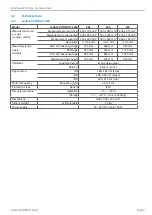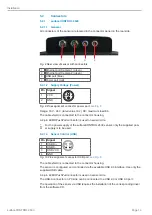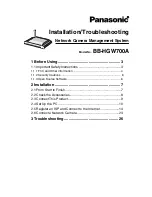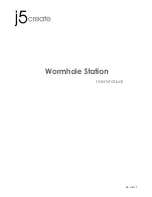
Page 22
Operation of the Sensor
surfaceCONTROL 2500
6.6.4
External Light
For external light suppression, the sensor is equipped with corresponding filters in front of the
camera lenses. They allow only a narrow (band-limited) wavelength range around the wave-
length of the light projected onto the test object. In general, additional shielding of external
light directly emitted on the target or reflected in the sensor is advisable.
i
Pay particular attention to unwanted reflections of the projected structured light outside
the target area (background, object holder or similar) which can be reflected back again
into the view area of the sensor.
i
Matt black surface coatings are recommended for all objects outside the measuring
range (object holders, transport equipment, grippers or similar).
6.6.5
Mechanical Vibrations
As high resolutions in the µm range will be achieved with the sensor, particular attention must
be paid to as vibration-free as possible set-up of sensor and test object.
6.6.6
Surface Roughness and Texture
Surface roughnesses of the order of 5 µm and more as well as textures on the surface result
in increased “surface noise”. In addition, direct reflections of the projected light can also occur
on grinding marks or small scratches on the surface. This can result in inaccurate measured
values. Remedy can possibly be provided by adjusting the exposure or by other sensor set-
tings, e.g. filter.
6.6.7
Shadowing Effects and Multiple Reflections
Shadowing effects and multiple reflections occur particularly frequently on strongly curved
surfaces. Steep edges and large differences in height lead to certain areas on the test object
being underprojected. Furthermore, parts of the test object cannot be detected completely
by the cameras, which leads to a loss of measuring points on the surface. This effect can be
diminished by a change in orientation of the sensor to the surface.
Multiple reflections of the projected pattern from certain areas of the surface to other areas
of the surface lead to overlaps of the original pattern. This can result in inaccurate measured
values. Remedy can possibly be provided by selectively masking the projected pattern and
not illuminating the undesirably reflecting areas. The procedure for masking certain areas is
described in the operating instructions of the surfaceCONTROL Defmap3D software. However,
if you want to check these areas anyway, repeated data acquisition with modified masking is
necessary.
Shadowing effects receiver
Shadowing effects projection
Fig. 16 Shadowing effects





































